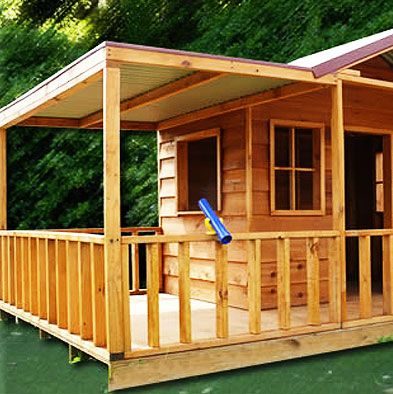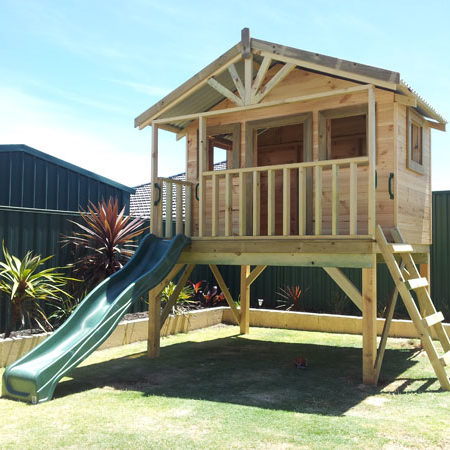Looking for ways to create a safe and fun outdoor play space for your kids thus giving them an excessive amount of running and jumping? Have you ever heard of cubby houses? It’s an outdoor play structure with swings and slides and a wonderful addition to your child’s life and the aesthetics of your yard.
These incredible play areas offer kids a chance to let their imaginations run wild and foster creativity, independence, and self-assurance no matter where you are in Queensland, in Brisbane or elsewhere. To make sure your child will make the most of their new cubby and it would work best with your family and backyard, it might be worthwhile to look into all of the alternatives.
Type
The material is quite important. Most cubbies are made of wood, plastic, or a combination of the two, but which will best serve the purpose depends on your level of maintenance prowess, financial constraints, and preferred appearance.
Wood
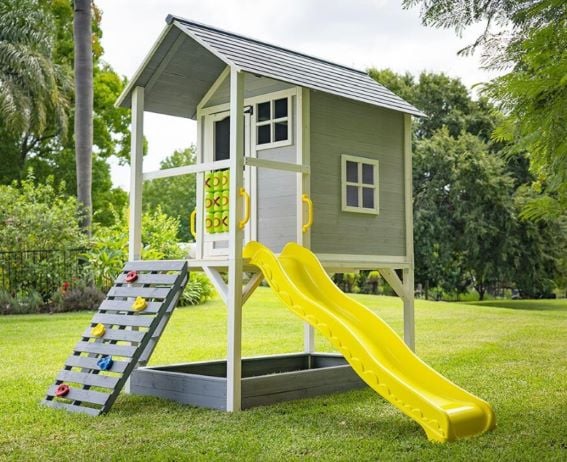
If you want a classic, simple, and paint-able structure, charming wooden cubby houses are the most popular choice among parents. Why? Because timber wood is a strong, adaptable material that can support the added weight of challenging slides and climbing walls. The best part about it is that you can even build a wooden cubby that looks like your home while allowing your kids to play freely.
However, not all wooden cubby houses are made of timber. They are constructed from different types of wood and each type comes with some unique advantages. Fir and cedar are the two kinds that are most frequently used to construct a wooden cubby house. Fir is a quickly expanding, lightweight, naturally insect and decay-resistant wood that is perfect for playground equipment.
While cedar wood is highly resistant to warping, bending, and checking due to its low shrinkage factor. Fir and cedar wood are both incredibly strong and resilient, even in harsh environmental circumstances.
Wooden cubbies, however, come with certain drawbacks. The first and the most obvious is that wood will ultimately splinter. Therefore, structures made of wood require regular maintenance, especially if they are an unsealed model. Make sure to frequently inspect it for rotting or splitting wood, and if you live in an area with frequent rain, you might want to consider purchasing a precipitation repellent.
Many businesses only use treated timber, which can survive bad weather and won’t rot when exposed to moisture. Keep in mind though that timber will also need to be treated by sanding away any rough edges and repainting it with a stain to help prolong the protective coating.
Plastics
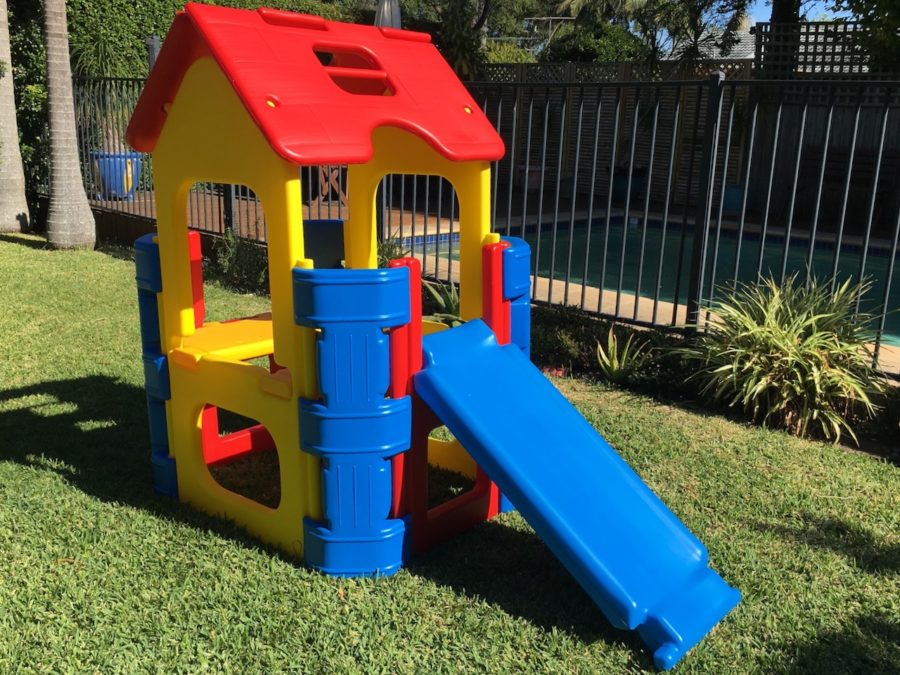
For most parents, plastic toys conjure up images of poor quality and unattractive appearance. But that’s not the case with cubbies. Plastic structures resemble their wooden counterparts quite well. Moreover, plastic does not splinter and is less likely to decay than old wood, especially if you live in an area with erratic weather. Alternatively, if you have a tiny yard and want to be able to move the house, plastic solutions are easier to disassemble and less time-consuming.
The drawback of plastic cubbies is that they are less durable than wood and will deform in extremely hot temperatures. When your child isn’t using it, it’s a good idea to relocate the plastic cubby house to a covered area to prevent the growth of mould and fungus. However, if your child is impatient and wants to play right away, this can be a hassle.
Size
Although they don’t usually take up a lot of room, you still need to find one that fits in your backyard, has enough space for outside play, and gives your dog ample yard to enjoy. The age and height of your child should be taken into account as well.
Next, think about your lawn or wherever you plan to put the cubby house. If you have a large farm with many acres, you may consider a substantial-sized cubby with extras like slides and monkey bars.
Having said that, you can still locate structures that will provide enough space and entertaining amenities if you live in a flat or patio home, though placement may require a little more thought. In Australia, some cubbies are as little as 1.7m x 1.8m and as large as 2.4m x 2.4m.
Cottage or Elevated
Speaking of height, there are two basic types to choose between the cottage and elevated ones. When purchasing the ideal one take into account the age of your children, your preferred aesthetic, and add-on options.
Children who are young or who don’t seem interested in slides or monkey bars will do well in cottages. They are more accessible because they are at ground level and don’t require steps to enter.
Elevated, on the other hand, offer greater customisability, add-on options, and resilience, making them perfect for active and older kids.
Additionally, there is no need to worry about it leaking after a summer downpour because the elevated designs rapidly drain rainwater. The raised form is also preferred by most kids because it has a treehouse-like feel and is simple to construct slides and rock-climbing walls.
Customisation
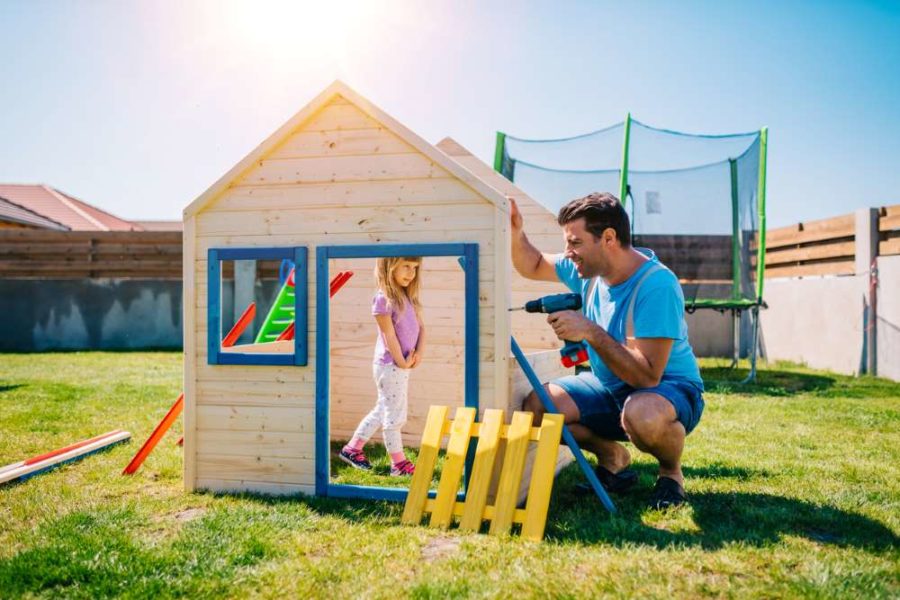
Your child won’t be the only one to appreciate a cubby house if you’re a creative parent who enjoys getting your hands dirty and working on any DIY project. These outdoor play spaces are also incredibly simple to personalize because of their plain wood frames, which encourage owners to paint and decorate them to match their preferred style.
Furthermore, numerous interior accoutrements may be added to the cubby to make it more comfortable. But the personalisation options don’t stop at the exterior. A service counter, stools, a club lounge, educational wooden toys, a kitchenette, activity tables, and many other interior improvements are all possible.

